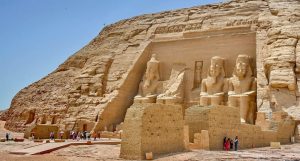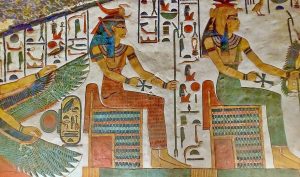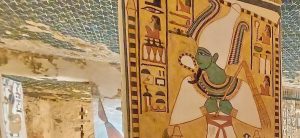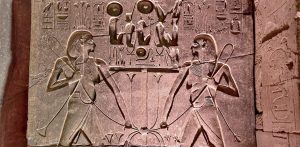Ankh, The Key of Life by the Egyptians
In the vast and enigmatic realm of ancient Egyptian civilization, few symbols capture the essence of life and its eternal mysteries quite like the Ankh. Known as the “Key of life,” this ancient Egyptian hieroglyphic symbol has fascinated scholars, archaeologists, and enthusiasts for centuries.
The Ankh, with its distinctive looped cross, holds a profound significance in the ancient Egyptian belief system, encapsulating the essence of existence, fertility, and the eternal cycle of life and death.
As we delve into the mystical world of the Ankh, we will unravel its origins, explore its multifaceted meanings, and discover its enduring legacy in Egyptian culture, art, and spirituality. Join us on this captivating journey as we unlock the secrets of the Ankh, the Key of life.
Ankh and the Afterlife
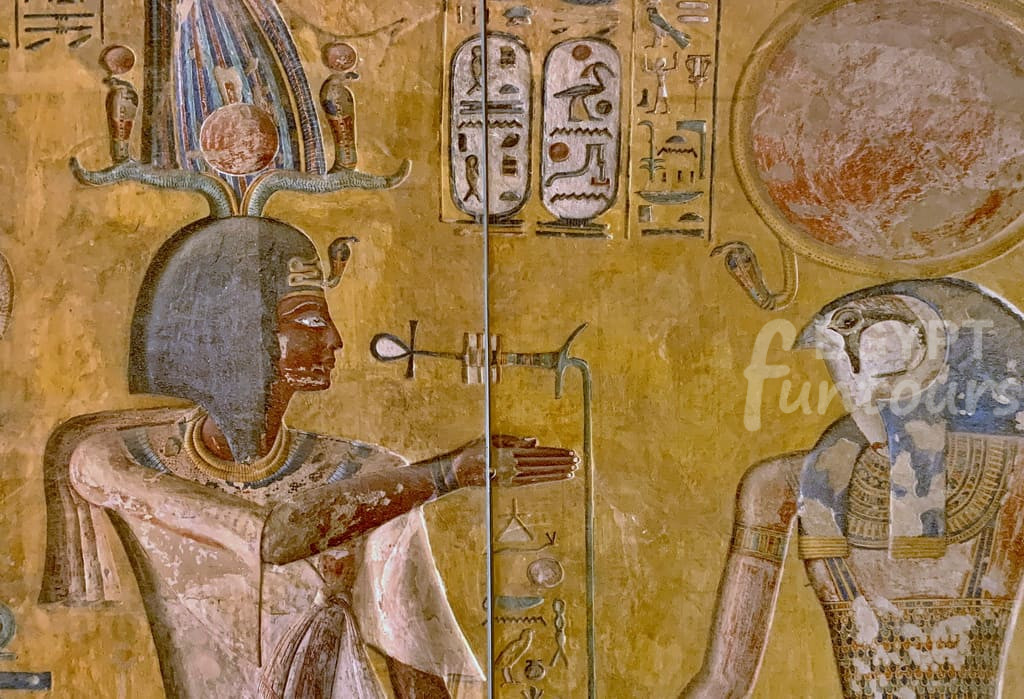
The Ankh, often referred to as the “Key of life,” holds a deep association with the afterlife in ancient Egyptian culture. The concept of an afterlife was of utmost importance to the Egyptians, who believed that death was not the end, but rather a transition into a new realm of existence.
The Ankh symbol, with its looped cross and elongated stem, became a powerful representation of this belief, serving as a bridge between the mortal world and the divine realm.
In Egyptian mythology, the Ankh was closely linked to the gods and goddesses who governed the afterlife, particularly Osiris, the god of the underworld and the judge of the deceased. It was believed that Osiris held the Ankh, granting life and immortality to those deemed worthy. As a result, the Ankh became a symbol of Osiris’ divine power and the promise of eternal life.
Furthermore, the Ankh’s association with the afterlife extended beyond its role as a symbol of immortality. It also represented the concept of regeneration and rebirth. The looped top of the Ankh was seen as a representation of the uterus and the concept of birth, while the elongated stem symbolized the eternal nature of the soul.
This duality of birth and eternal life embodied in the Ankh reinforced the Egyptians’ belief in the cyclical nature of existence, where death was merely a doorway to a new beginning.
Even today, the Ankh continues to captivate and intrigue us with its profound connection to the afterlife. Its enduring legacy reminds us of the ancient Egyptians’ profound understanding of life’s transient nature and their unwavering belief in the immortality of the soul. The Ankh stands as a timeless symbol, beckoning us to contemplate the mysteries of the afterlife and the eternal journey that awaits us all.
Depictions of the Ankh
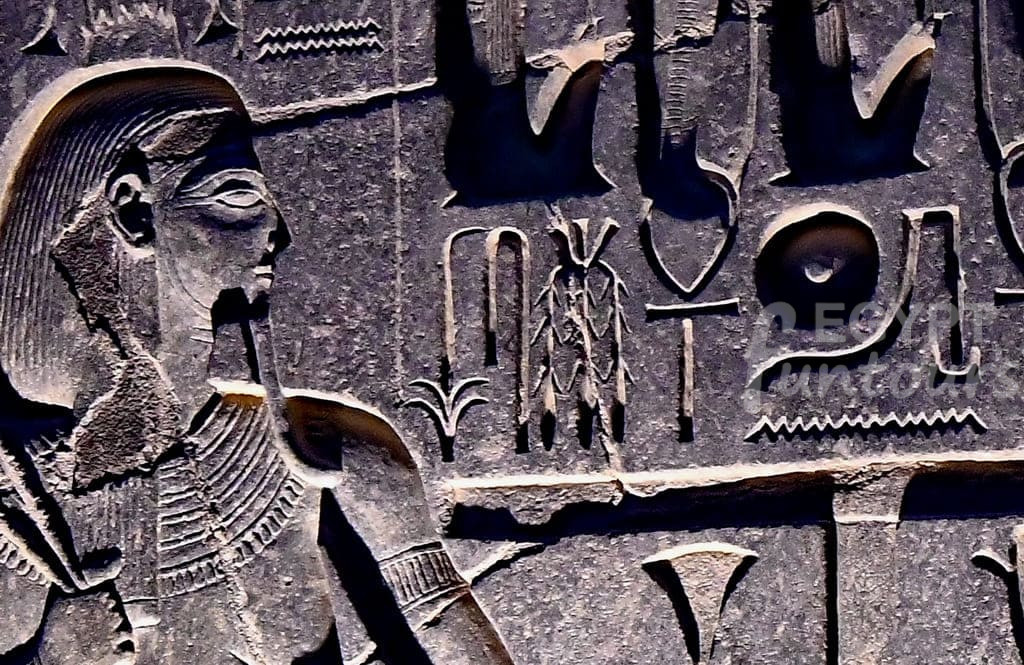
Depictions of the Ankh can frequently be found in ancient Egyptian funerary art, tomb paintings, and amulets. It was often placed in the hands of the deceased or positioned near their bodies in burial sites, serving as a talisman to guide and protect the soul on its journey to the afterlife.
The Ankh was thought to provide the necessary energy and life force for the soul to navigate the treacherous challenges of the underworld and ultimately achieve a blissful existence in the realm of Osiris.
Ankh Meaning and Origin
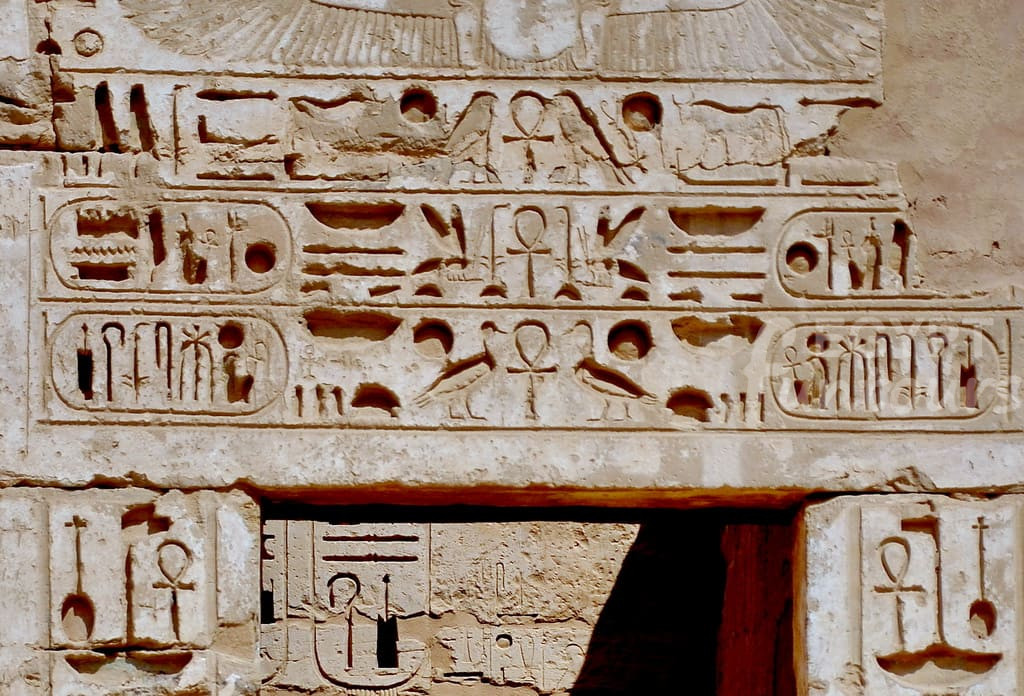
The word “Ankh” itself translates to “life” or “breath of life” in the ancient Egyptian language. The symbol consists of a distinctive looped cross with a long vertical stem, resembling a key or a cross with a handle. The loop at the top of the Ankh is often interpreted as a representation of the sun rising over the horizon, while the elongated stem represents the Nile River, the source of life and fertility in ancient Egypt.
The exact origin of the Ankh symbol is still a subject of debate among scholars. While its earliest depictions date back to the Early Dynastic period (c. 3150–2613 BCE), the symbol’s precise creation remains elusive.
Some theories suggest that the Ankh may have originated from an ancient symbol representing a sandal strap, while others propose its connection to the hieroglyph for the word “mirror.” However, regardless of its exact origin, the Ankh symbol quickly gained prominence and became an integral part of Egyptian iconography.
In ancient Egyptian mythology, the Ankh was closely associated with gods and goddesses, particularly those connected to life, fertility, and the afterlife. It was often depicted being held by deities such as Osiris, Isis, and Hathor, symbolizing their power to grant and sustain life. The Ankh was also closely linked to the Pharaoh, who was seen as the earthly embodiment of divine power and immortality.
The Ankh’s meaning extends beyond its association with life and fertility. It represents the concept of balance and harmony, encompassing the union of male and female energies, as well as the integration of the physical and spiritual realms.
The horizontal and vertical elements of the Ankh symbolize the duality of existence, with the horizontal line representing the earthly plane and the vertical line representing the divine or spiritual realm. This symbolism reinforces the Egyptians’ belief in the interconnectedness of all aspects of life.
Furthermore, the Ankh symbolizes eternal life and the cyclical nature of existence. It embodies the belief in the afterlife and the concept of rebirth, where death is merely a transition to a new phase of existence. The Ankh served as a powerful talisman, believed to provide protection and guidance to both the living and the deceased on their respective journeys.
Ankh and Goddess Isis

The Ankh symbol shares a profound and intimate connection with the ancient Egyptian goddess Isis, who was one of the most revered and widely worshipped deities in the Egyptian pantheon. The association between the Ankh and Isis is deeply rooted in mythology, symbolism, and the religious practices of ancient Egypt.
Isis, often depicted as a powerful and compassionate goddess, was revered as the epitome of femininity, motherhood, and magic. She was considered the wife of the god Osiris and the mother of Horus, who would eventually become the pharaoh of Egypt.
Isis played a pivotal role in the resurrection of Osiris after he was murdered by his brother Seth, and she was seen as the embodiment of life-giving power and the divine feminine.
The Ankh symbol is frequently depicted in the hands of Isis in ancient Egyptian art and iconography. This representation emphasizes her role as the bestower of life and the key to eternal existence.
The Ankh held by Isis can be interpreted as a symbol of her divine authority over life and death, as well as her ability to grant immortality and protection to her devotees.
The Ankh’s association with Isis goes beyond symbolism. It is believed that the Ankh was often used in rituals dedicated to the goddess. Ancient Egyptian texts and inscriptions suggest that the Ankh was employed as a tool to invoke the presence and blessings of Isis during ceremonies and offerings. The Ankh was believed to enhance the connection between the worshipper and the goddess, facilitating a deeper spiritual connection and the acquisition of Isis’s divine attributes.
Moreover, the Ankh is closely linked to the concept of eternal life and resurrection, which aligns with Isis’s role in the resurrection of Osiris. The Ankh symbolizes the eternal soul and the cyclical nature of existence, emphasizing the belief in life after death and the promise of rebirth.
As the goddess who possessed the power to resurrect the dead, Isis was seen as the guardian of the afterlife and the guide to the realm of the gods.
The connection between the Ankh and Isis is a testament to the profound significance of both symbols in ancient Egyptian culture. Together, they encapsulate the Egyptians’ belief in the eternal nature of the soul, the interplay between life and death, and the power of the divine feminine.
The Ankh symbolizes the key to eternal existence, while Isis embodies the nurturing and life-giving qualities that sustain and protect life. Thus, the Ankh and Isis are intertwined, representing the inseparable aspects of creation, rebirth, and the eternal cycle of life in ancient Egyptian spirituality.
Ankh in Christianity
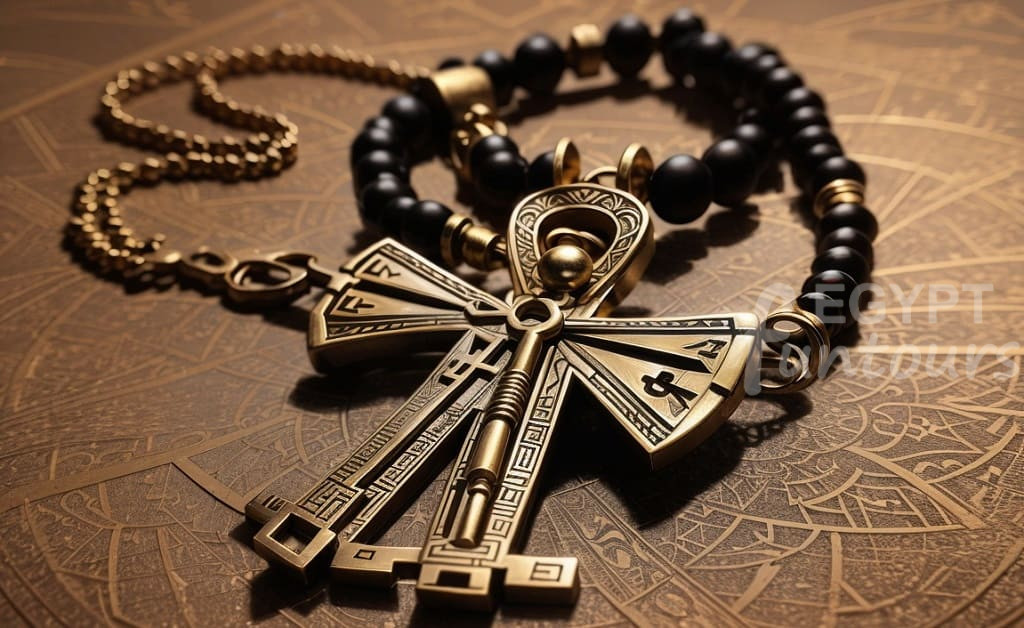
The Christian Ankh, also known as the Coptic Cross or the Crux Ansata, is a variant of the ancient Egyptian Ankh symbol that has been adopted and reinterpreted within Christian symbolism. While the Ankh has its roots in ancient Egyptian religion and culture, the Christian Ankh represents a distinct fusion of religious beliefs and cultural influences.
The Christian Ankh retains the basic shape of the original Ankh symbol, featuring a looped cross with a teardrop-shaped loop at the top. However, it incorporates Christian elements to convey its unique significance within the context of Christianity. The horizontal bar of the Christian Ankh represents the cross on which Jesus Christ was crucified, symbolizing his sacrifice and redemption.
The Christian Ankh serves as a powerful symbol of eternal life and resurrection in Christian theology. It signifies the victory of Christ over death and the promise of salvation for believers. Just as the original Ankh symbolized the eternal soul and the cyclical nature of existence, the Christian Ankh embodies the Christian belief in the resurrection and the eternal life offered through faith in Jesus Christ.
The adoption of the Ankh into Christian symbolism can be traced back to the early Christian era in Egypt, where the Coptic Orthodox Church flourished. The Copts, who were among the earliest Christian communities, integrated elements of their own cultural heritage into their newfound faith. As a result, the Ankh, a potent symbol deeply ingrained in Egyptian culture, found its way into Christian iconography.
In the Christian context, the Ankh is often associated with the concept of Christ as the giver of life. The teardrop-shaped loop at the top of the Christian Ankh represents the water of baptism and the cleansing of sins. It is seen as a reminder of the spiritual rebirth and regeneration that comes through acceptance of Jesus Christ as Lord and Savior.
While the Christian Ankh may not be widely recognized or used in all Christian denominations, it holds particular significance for Coptic Christians and those who appreciate the rich cultural and historical tapestry of Christianity.
It serves as a bridge between the ancient Egyptian civilization and the Christian faith, showcasing the continuity and adaptability of religious symbols throughout history.
The Christian Ankh stands as a testament to the diverse ways in which religious symbols can evolve and find new meanings within different cultural and religious contexts. It represents the shared human longing for life, hope, and transcendence, regardless of religious traditions.
Ankh as it relates to the sun
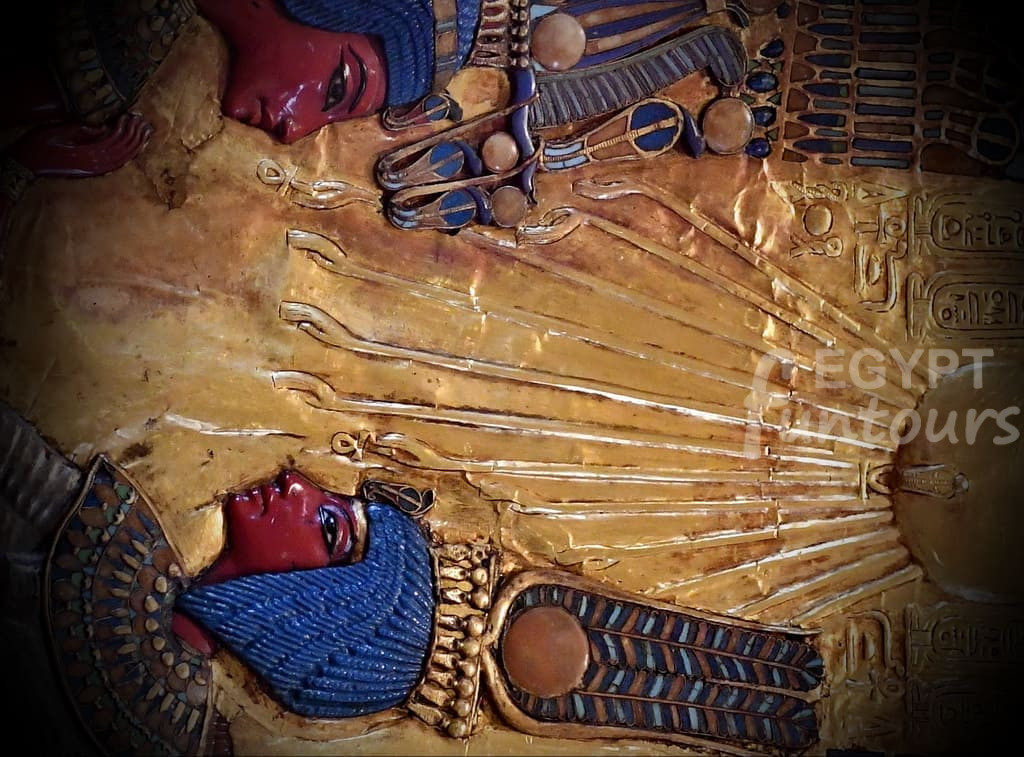
The Ankh symbol and the sun have a significant relationship in ancient Egyptian belief and symbolism. The hoop or loop at the top of the Ankh represents the sun, while the horizontal bar represents the Earth. This connection between the Ankh and the sun reflects the Egyptian understanding of life and the cyclical nature of existence.
In Egyptian belief, the sun was associated with life and renewal. It was seen as a symbol of divine power and represented the life-giving force that sustained all living things. The rising and setting of the sun were considered reenactments of the original events of creation, which maintained and renewed life in the cosmos.
The Ankh, with its loop representing the sun, symbolized the union of heaven and earth, the divine and the earthly realms. It represented the concept of life and the eternal soul, as well as the idea of rebirth and regeneration. The Ankh was often associated with the gods and goddesses who were believed to hold the power of life and creation.
Additionally, the Ankh was seen as a key that unlocked the doors to the afterlife. It was believed to provide access to the realm of the dead and the hidden mysteries of eternity. In funeral ceremonies, the Ankh was often depicted as the key to the doors of the tomb, emphasizing its role in the journey to the afterlife.
Overall, the Ankh’s association with the sun in ancient Egyptian symbolism highlights the interconnectedness of life, the divine, and the cyclical nature of existence. It represents the belief in the continuity of life and the eternal soul, as well as the connection between the earthly realm and the realm of the gods.
Ankh in relation to the Djed Pillar Symbol
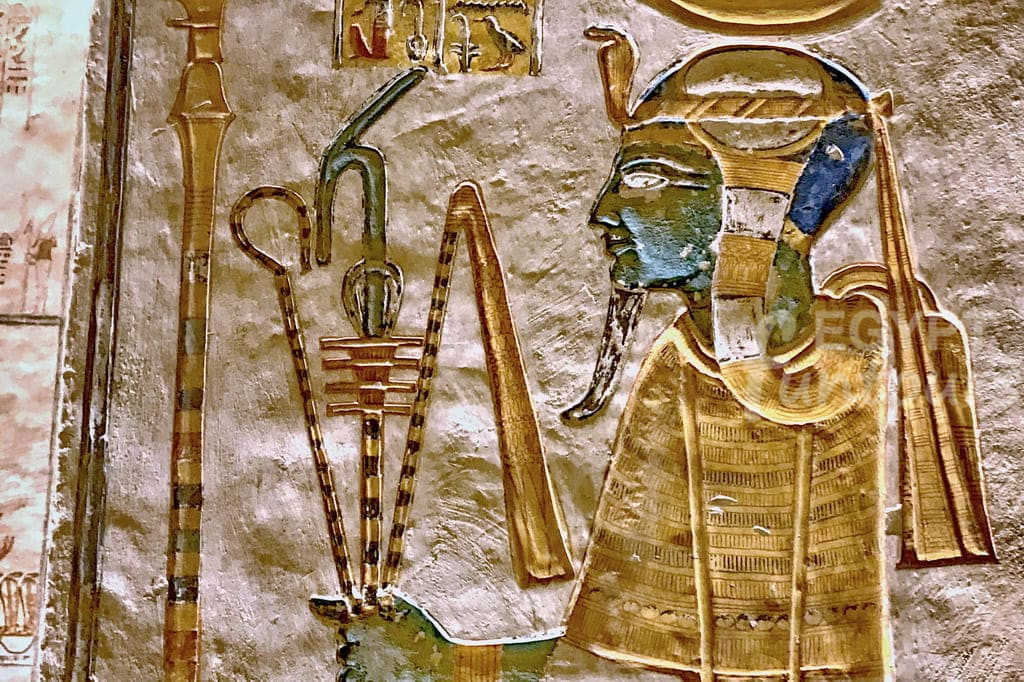
The Ankh and the Djed Pillar are two distinct symbols in ancient Egyptian culture, but they are often seen together and are believed to be closely related in their symbolism and meaning.
The Ankh, as mentioned earlier, represents life, immortality, and the eternal soul. It is often depicted as a cross with a loop at the top, resembling a key. The Ankh is associated with the cult of Isis and is considered a symbol of the union between Osiris and Isis. It is also known as the “key of the Nile” and is believed to be a key that can open the door to the afterlife.
On the other hand, the Djed Pillar is a symbol of stability, endurance, and strength. It is often depicted as a pillar with four horizontal bars. The Djed Pillar is closely associated with Osiris, the god of the afterlife and resurrection. It is considered the backbone of Osiris and represents his stability and regenerative power.
The relationship between the Ankh and the Djed Pillar lies in their connection to the concept of eternal life and resurrection. The Ankh symbolizes the eternal soul and the promise of life after death, while the Djed Pillar represents the stability and endurance necessary for the process of resurrection and rebirth.
In some depictions, the Ankh and the Djed Pillar are shown together, often with the Was Scepter, another symbol associated with power and authority. This combination of symbols represents the divine forces of life, stability, and power working together to ensure the continuity of existence and the afterlife.
Overall, the Ankh and the Djed Pillar are complementary symbols that convey the interconnected concepts of life, resurrection, and eternal stability in ancient Egyptian belief. They represent the fundamental aspects of the cycle of life and death, offering hope and assurance of continuity beyond the earthly realm.
Ankh under the reign of King Akhenaten
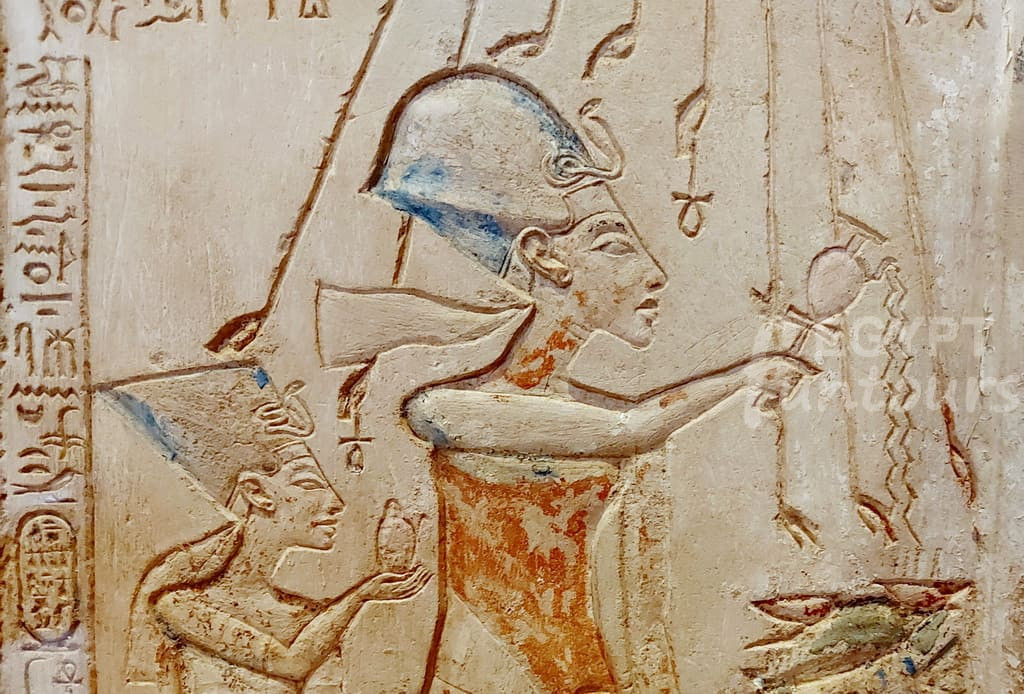
The connection between King Akhenaten and the Key of Life (Ankh) lies in Akhenaten’s religious reforms and his association with the Aten, the sun’s disk. Akhenaten introduced a new cult dedicated to the Aten, and his reign saw significant changes in religious beliefs, art, and architecture.
During Akhenaten’s rule, the traditional polytheistic worship of multiple gods was replaced by the worship of the Aten as the supreme deity. The Aten was depicted as the sun’s disk, and its rays were often shown ending in hands, which could be interpreted as offering the sign of life, represented by the Ankh symbol.
The Ankh, also known as the Key of Life, is a symbol of eternal life, resurrection, and rebirth in ancient Egyptian culture. It represents the concept of life and the eternal soul. The association between Akhenaten and the Ankh symbolizes his emphasis on the worship of the Aten and the belief in the eternal life-giving power of the sun.
Akhenaten’s reign marked a unique period in Egyptian history, known as the Amarna Period or the Amarna Revolution. During this time, the Ankh symbol continued to be used, even though Akhenaten outlawed the cults of Amun, the traditional god associated with the Ankh symbol.
This suggests that the Ankh symbol held a broader significance beyond specific religious cults and remained a powerful symbol of life and resurrection.
In summary, the connection between King Akhenaten and the Key of Life (Ankh) lies in his religious reforms centered around the worship of the Aten, the sun’s disk. The Ankh symbolizes eternal life and was used during Akhenaten’s reign, despite his rejection of other traditional gods. It represents the enduring belief in the power of life and resurrection.
The Use of Ankh
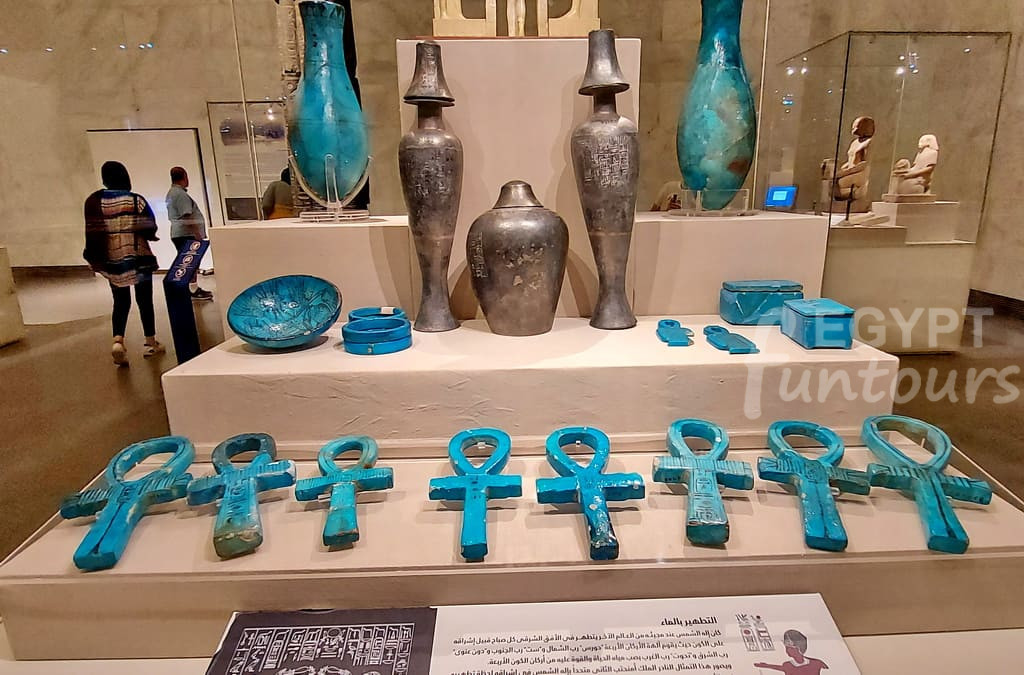
Throughout ancient Egyptian history, the Ankh was prominently featured in various aspects of life. It was commonly used in religious rituals, funerary ceremonies, and as an amulet or talisman believed to offer protection and ensure a prosperous afterlife. The Ankh was often placed in the hands of deities, pharaohs, and even ordinary people in tomb paintings and reliefs, emphasizing its connection to the divine and its role in the journey to the afterlife.
The influence of the Ankh extended beyond Egypt and reached neighboring civilizations. In Nubia, the Ankh was adopted by the Kushite kingdom and used in their religious practices. The symbol can also be found in ancient Mesopotamia, where it was associated with the goddess Ishtar and the concept of fertility and life.
In more recent history, the Ankh has experienced a resurgence in popularity, particularly in modern spiritual and New Age movements. It has become a symbol of personal transformation, spiritual awakening, and the pursuit of a balanced and harmonious life. The Ankh’s timeless symbolism continues to captivate and inspire individuals seeking deeper meaning and connection.
The use of the Ankh throughout history showcases its enduring significance as a symbol of life and immortality. Its presence in ancient Egyptian culture and its subsequent influence on other civilizations demonstrate its universal appeal and the timeless quest for understanding the mysteries of life and death. The Ankh serves as a reminder that life is a precious gift, and its symbolism continues to resonate with people seeking to embrace the eternal nature of existence.
The Use of Ankh Today
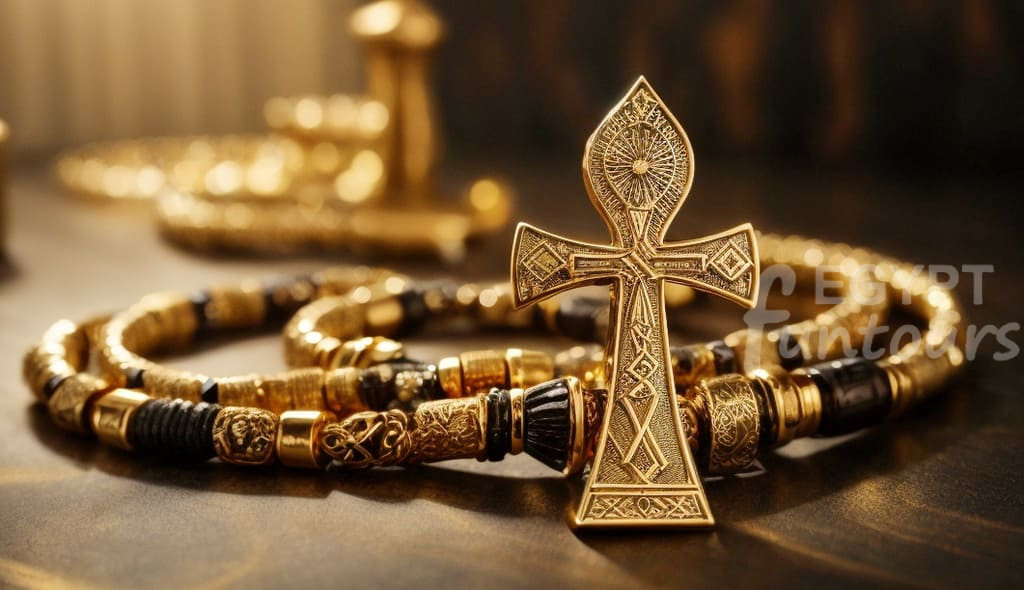
One of the most prominent uses of the Ankh today is in the realm of fashion and style. The symbol has become a popular motif in jewelry, clothing, and accessories. Many people choose to wear Ankh necklaces, earrings or rings as a way to express their connection to ancient wisdom, spirituality, and the enduring power of life.
The Ankh’s distinctive shape and symbolism make it a visually striking and meaningful addition to personal style.
Beyond fashion, the Ankh has also been embraced by contemporary spiritual communities and individuals seeking a deeper understanding of life’s mysteries. It has become a symbol of spiritual awakening, personal transformation, and the pursuit of a balanced and fulfilling existence.
Many practitioners of various spiritual traditions, including Wicca, Neo-Paganism, and New Age beliefs, incorporate the Ankh into their rituals, meditations, and ceremonies. The symbol represents the eternal nature of the soul, the cycle of life, death, and rebirth, and the interconnectedness of all things.
In addition to its spiritual and fashion applications, the Ankh has made its way into popular culture and entertainment. It can be seen in movies, television shows, and video games, often used to signify ancient mysteries, hidden knowledge, or supernatural powers.
The symbol’s association with life and immortality adds an element of intrigue and fascination to various narratives and storytelling mediums.
Furthermore, the Ankh has become a symbol of cultural heritage and pride for those with Egyptian ancestry or a deep appreciation for ancient Egyptian civilization. It serves as a reminder of the rich history and cultural contributions of Egypt and its enduring impact on the world.
In conclusion, the Ankh symbol continues to find relevance and resonance in contemporary society. Whether embraced for its spiritual significance, incorporated into personal style, or celebrated as an emblem of cultural heritage, the Ankh symbolizes the eternal nature of life and the timeless quest for meaning and connection. Its use today serves as a testament to the enduring power and universal appeal of this ancient symbol.
What is the Spiritual Meaning of Ankh?
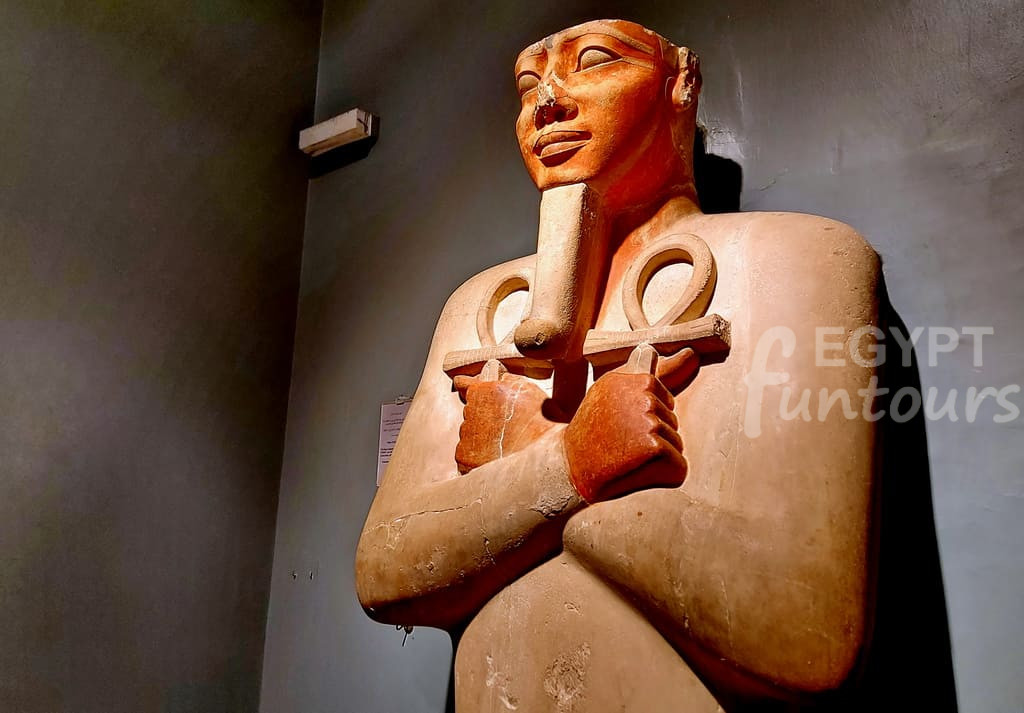
The spiritual meaning of the Ankh symbol varies depending on different interpretations and beliefs. However, there are several common spiritual meanings associated with the Ankh:
1. Eternal Life: The Ankh is often seen as a symbol of eternal life and immortality. It represents the belief in the continuity of the soul beyond physical existence and the cycle of life, death, and rebirth.
2. Healing and Balance: The Ankh is sometimes viewed as a healing tool, representing the balance and harmony between different aspects of life, such as the physical, emotional, and spiritual realms. It is believed to bring about healing and restoration.
3. Key to the Afterlife: In ancient Egyptian culture, the Ankh was considered a key to the kingdom of the dead and the afterlife. It symbolized the journey and transition from the earthly realm to the spiritual realm.
4. Hidden Knowledge: The Ankh is associated with hidden knowledge and wisdom. It is seen as a key that unlocks the mysteries of the universe and provides access to spiritual insights and understanding.
5. Fertility and Abundance: The Ankh is also connected to fertility and abundance. It represents the life-giving forces of nature and the ability to create and nurture life in all its forms.
It’s important to note that the spiritual meaning of the Ankh can vary among different cultures, spiritual traditions, and individual interpretations. Ultimately, the significance of the Ankh is a deeply personal and subjective experience, and its spiritual meaning may resonate differently with each person.
Ancient Deities Possession of Ankh
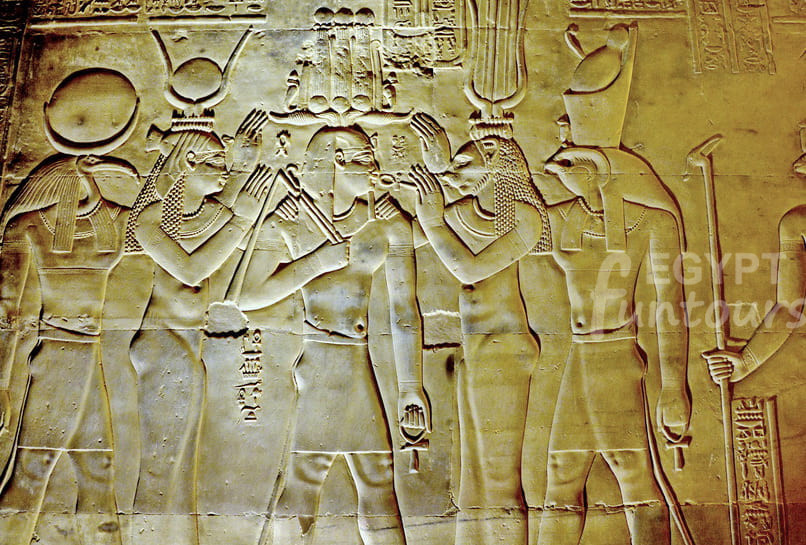
The ancient gods and goddesses of Egypt are often depicted holding the Ankh symbol. The Ankh was a powerful symbol associated with life, immortality, and divine protection. Here are some possible reasons why the ancient gods and goddesses held the Ankh:
1. Symbol of Life and Immortality: The Ankh represents the concept of eternal life and the continuation of the soul beyond physical existence. By holding the Ankh, the gods and goddesses symbolize their ability to grant and sustain life.
2. Divine Power and Authority: The Ankh was closely associated with the gods and goddesses, who were believed to possess divine power and authority. Holding the Ankh signified their role as givers and sustainers of life, as well as their ability to bestow blessings and protection upon their worshippers.
3. Connection to the Afterlife: The Ankh was considered a key to the afterlife, and by holding it, the gods and goddesses demonstrated their ability to guide and protect souls in their journey to the realm of the dead. It represented their role as guardians of the afterlife and their ability to ensure the immortality of the deceased.
4. Fertility and Creation: The Ankh was also associated with fertility and the creative forces of life. By holding the Ankh, the gods and goddesses symbolized their role in the creation and preservation of life, as well as their ability to bring about abundance and prosperity.
5. Symbol of Divine Union: The looped top of the Ankh has been interpreted as a symbol of the union between masculine and feminine energies, representing the balance and harmony of the divine. By holding the Ankh, the gods and goddesses embodied this divine union and the harmonious interplay of opposing forces.
It’s important to note that the specific reasons for the gods and goddesses holding the Ankh may vary depending on the deity and the context in which they are depicted. The Ankh held by each god or goddess may carry additional symbolic meanings associated with their specific roles and attributes.
Ankh in relation to Modern Day Cultures

African Cultural Identity:
The Ankh has become a symbol of African cultural identity, particularly among people of African descent worldwide. It represents African heritage, resilience, and endurance. The Ankh is often embraced as a symbol of connection to ancient African civilizations and spirituality.
Neopagan and Spiritual Beliefs:
The Ankh is embraced by Neopagan and spiritual belief systems. It symbolizes the eternal life force, interconnectedness, and the cyclical nature of existence. It is often used as a symbol of spiritual awakening, transformation, and the pursuit of higher consciousness.
Goth Subculture:
The Goth subculture has adopted the Ankh as a symbol, incorporating it into fashion, jewelry, and artwork. It represents the duality of life and death, the afterlife, and the quest for meaning. In the goth subculture, the Ankh is often associated with individuality, spirituality, and a connection to ancient cultures.
Coptic Christian Tradition:
The Ankh has been adapted as the crux ansata in the Coptic Christian tradition. It symbolizes eternal life through Christ and represents the intersection of ancient Egyptian and Christian cultures. The Ankh is often used in Coptic Christian art, jewelry, and religious ceremonies.
Various Subcultures:
The Ankh has found its place in various subcultures, including alternative fashion, music, and art scenes. It is often used as a symbol of individuality, spirituality, and connection to ancient cultures. The Ankh’s meaning may vary among different subcultures, but it generally represents life, spirituality, and the pursuit of higher consciousness.
It is important to note that the interpretation and usage of the Ankh may vary among different individuals and communities. Its meaning can evolve over time, reflecting the diverse ways in which cultures embrace and relate to this ancient symbol.
Ankh Facts
Here are 20 important facts about the Ankh symbol:
1. The Ankh symbol is also known as the Key of Life or the Cross of Life.
2. It is one of ancient Egypt’s most iconic symbols, dating back thousands of years.
3. The Ankh represents the concept of life and immortality in ancient Egyptian culture.
4. The loop at the top of the Ankh symbolizes the eternal soul, while the vertical line represents the path of life.
5. The Ankh is often depicted as being held by gods and goddesses in ancient Egyptian art.
6. It is believed to have originated during the Early Dynastic Period (c. 3100-2686 BCE) in Egypt.
7. The Ankh symbolizes the union of male and female energies, representing fertility and creation.
8. It is associated with the god Osiris, who was the ruler of the afterlife and the god of resurrection.
9. The Ankh was often used in funerary rituals and was placed in tombs to ensure the deceased’s journey to the afterlife.
10. The symbol was also used as a protective amulet and was believed to bring good fortune and protection to the wearer.
11. The Ankh is sometimes referred to as the “Key of the Nile” due to its association with the life-giving properties of the Nile River.
12. It is frequently seen in ancient Egyptian hieroglyphics and was used to write the word for “life.”
13. The Ankh symbolizes the concept of eternal life and the continuation of the soul beyond death.
14. It is often depicted as being held by pharaohs and other high-ranking individuals in ancient Egyptian society.
15. The Ankh has been adopted and incorporated into various cultures and belief systems beyond ancient Egypt.
16. It is embraced by Neopagan and spiritual belief systems as a symbol of interconnectedness and the cyclical nature of existence.
17. The Ankh has become a symbol of African cultural identity, representing African heritage and resilience.
18. In the goth subculture, the Ankh is associated with the duality of life and death and the pursuit of meaning.
19. The Ankh is used in Coptic Christian tradition as the crux ansata, symbolizing eternal life through Christ.
20. The Ankh continues to be a popular symbol today, worn as jewelry and used in various forms of art and design.
These facts highlight the significance and enduring legacy of the Ankh symbol throughout history and in modern times.
Learn More about the key of life

